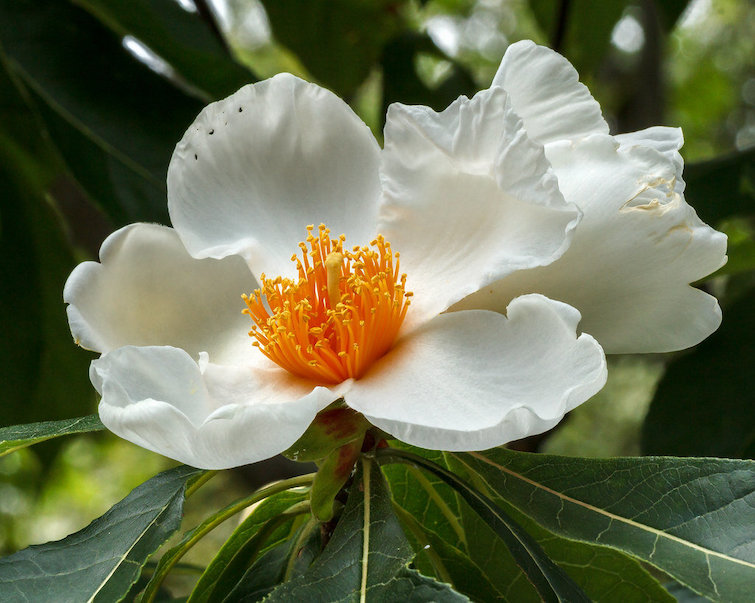This Independence Day weekend blog post is about John Bartram, the American gardener and botanist who revolutionized gardening.

John Bartram was born a third generation Quaker on a farm in Darby, Pennsylvania on March 23, 1699. While he had no formal education beyond the local school, he was interested in medicine and medicinal plants. Stymied by the lack of local medical schools, his interests gradually turned to botany and he became one of the first practicing Linnaean botanists in North America.
In 1728, Bartram purchased 102 acres of farmland and 10.5 acres of marshland along the Tidal Schuylkill River from Swedish settlers. After establishing his farm and building his house, he laid out his first garden across six or seven acres on a terraced slope leading from the house to the river. His farm and collections expanded over time and have since been recognized as the first botanical garden in the USA.

Bartram made many plant collecting trips, the first documented one to the “Jerseys and Schuykill mountains” in 1735. His many travels by boat, horseback, and on foot, took him to New England, south to Florida, and west to Lake Ontario. While traveling he collected seeds and plant specimens, assessing how best to cultivate them back home in Philadelphia and how to share his discoveries. Other Colonial-era plant nerds supported his efforts and shared unique plants from their own collections.

Through his seed and plant sharing network Bartram became associated with Peter Collinson, an English merchant, fellow Quaker, and Royal Society member. Collinson, also a plant lover, shared seeds and plants with fellow gardeners, many well placed in British society.
Encouraged by Collinson, who eventually became his chief agent in London, Bartram established an international trade in North American seeds and plants packed carefully in wooden “Bartram’s Boxes” which were shipped in the fall. For five guineas, clients received a container of generally 100 or more varieties of seeds, as well as occasional dried plant specimens and other natural curiosities like bird nests and rocks. Despite the hazards of a sea voyage, many arrived safely to their destinations, where they established a new palette of American colors and shapes within European gardens and landscape.

Bartram’s nursery business continued to grow and thrive with sons William and John Jr. joining the business. Bartram and William continued their plant collecting journeys around North America. In October of 1765, after becoming lost on one of their trips near the Altamaha River in southeast Georgia, they came across the “rare and elegant flowering shrub” Franklinia alatamaha. Of course they collected specimens, which is fortunate for us as the plant appears to be extinct in its original native range. It survives today in cultivation because of the Bartrams’ efforts (you can read this interesting article for more on the topic).

Photo by Tom Potterfield licensed by CC BY-NC-SA 2.0
After lobbying by Collinson and Benjamin Franklin in 1765, King George III granted Bartram a pension of £50 per year as the King’s Botanist for North America, a post he held until his death. In this position, Bartram shipped his seeds and plants to the royal collection at Kew Gardens. Bartram also contributed seeds to the Oxford and Edinburgh botanic gardens. In 1769 he was elected a foreign member of the Royal Swedish Academy of Sciences in Stockholm.

Bartram, the “Father of American Botany,” died in 1777. His sons, William and John Jr,. continued the family business of North American plants after the American Revolution. A total of three generations of the Bartram family continued to operate and expand the botanic garden. It was considered the major botanic garden in Philadelphia until the last Bartram heirs sold out in 1850. America’s oldest surviving botanic garden was dedicated as a 50 acre National Historic Landmark in 1963. Be sure to visit when you’re in the area.
Interested in learning more about John Bartram and other revolutionary gardeners of his time? There’s an excellent book by Andrea Wulf, “The Brother Gardeners“. I highly recommend it.

ISBN-13 : 978-0307454751
Happy Independence Day and here’s to garden revolutions everywhere!

Thanks for posting this!
Love this story. Thank you!
Thank you!!
Thank you for this. I loved Andrea Wulf’s book! I did not realize the Bartram garden was a Nat’l Historic Landmark and look forward to visiting it the next time I travel within striking distance.